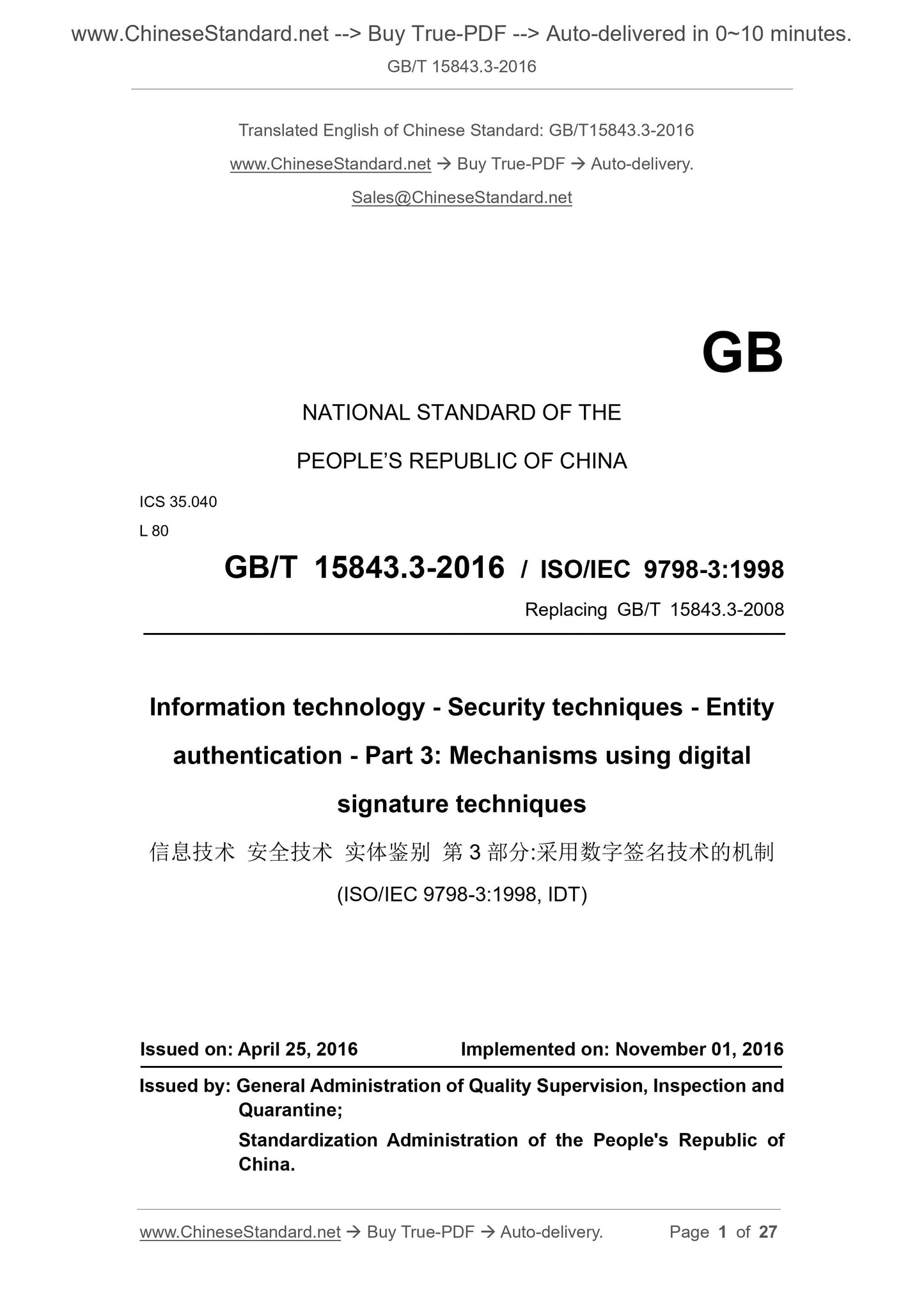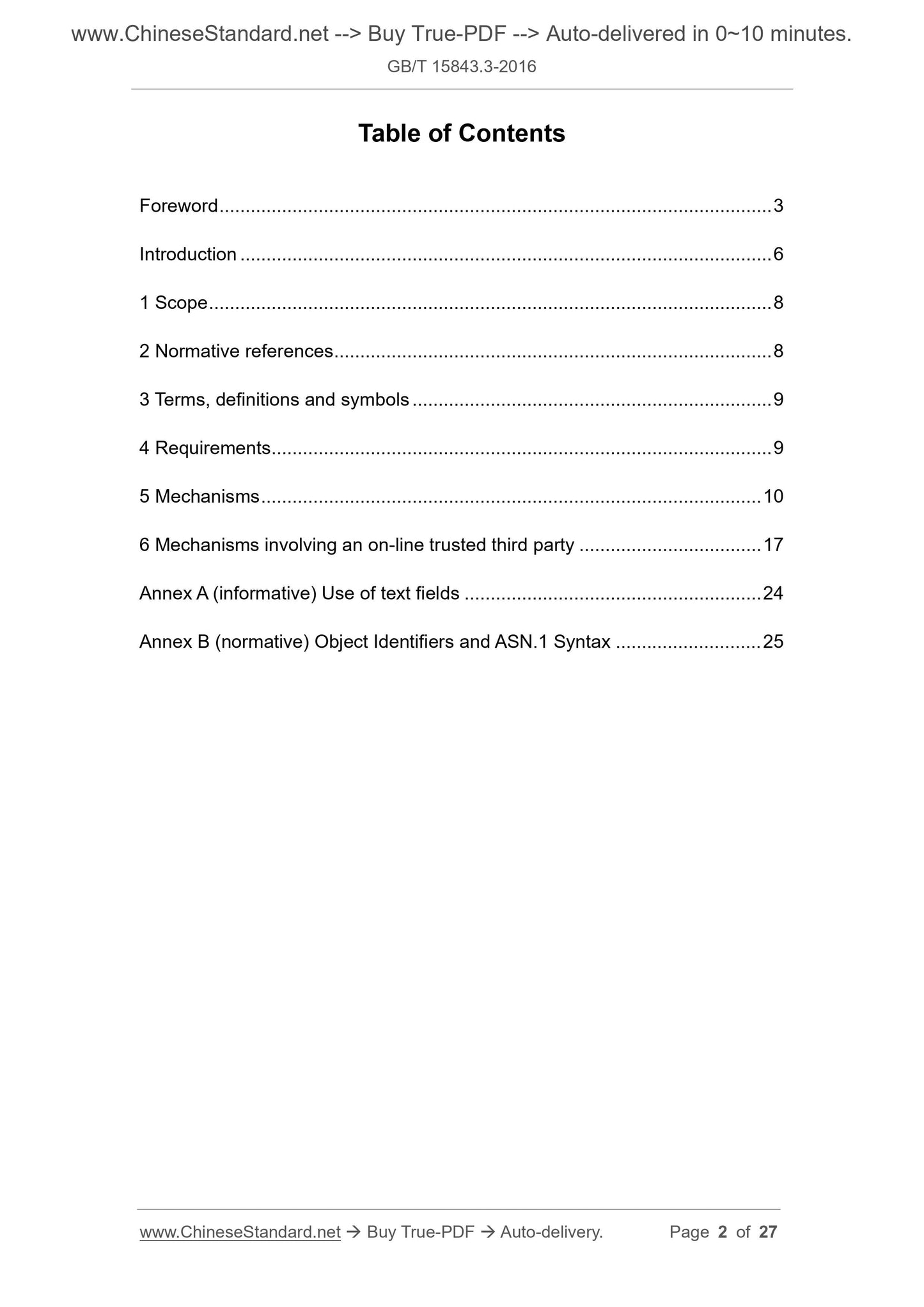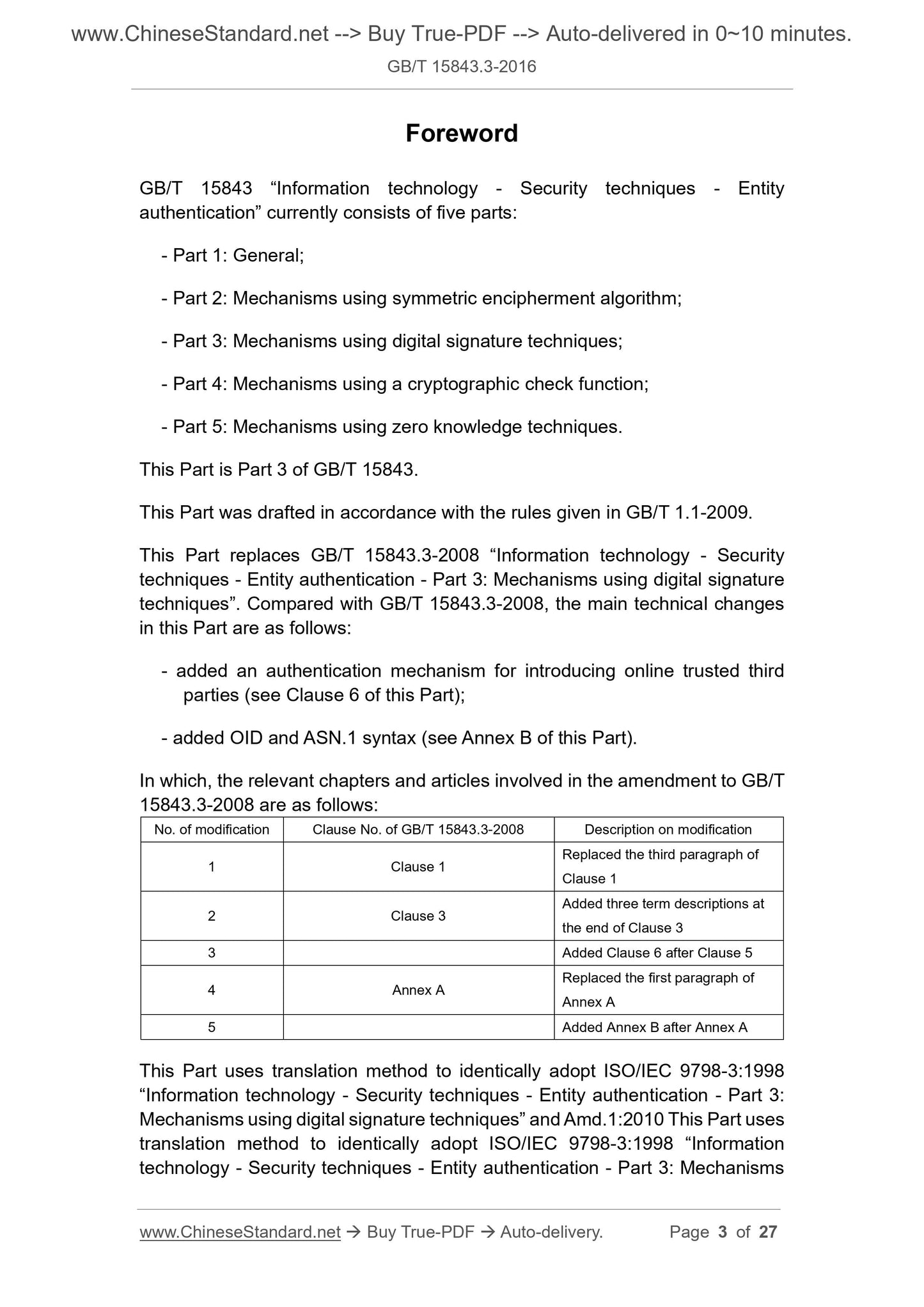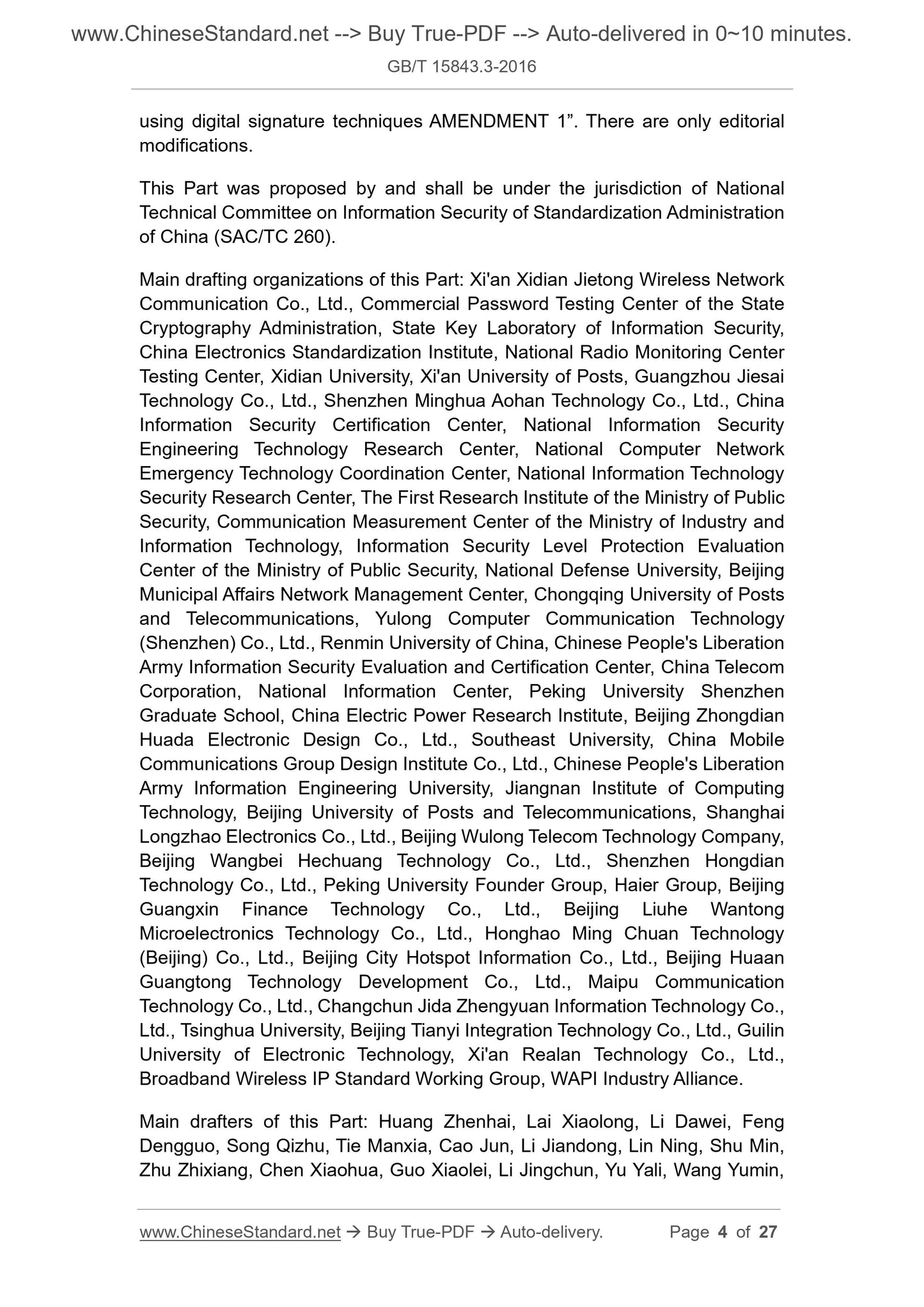1
/
of
5
www.ChineseStandard.us -- Field Test Asia Pte. Ltd.
GB/T 15843.3-2016 English PDF (GB/T15843.3-2016)
GB/T 15843.3-2016 English PDF (GB/T15843.3-2016)
Regular price
$210.00
Regular price
Sale price
$210.00
Unit price
/
per
Shipping calculated at checkout.
Couldn't load pickup availability
GB/T 15843.3-2016: Information technology -- Security techniques -- Entity authentication -- Part 3: Mechanisms using digital signature techniques
Delivery: 9 seconds. Download (and Email) true-PDF + Invoice.Get Quotation: Click GB/T 15843.3-2016 (Self-service in 1-minute)
Newer / historical versions: GB/T 15843.3-2016
Preview True-PDF
Scope
This part of GB/T 15843 specifies an entity authentication mechanism using digital signature technology. There are two authentication mechanisms for a single entityAuthentication (one-way authentication), the rest is the mutual authentication mechanism of two entities.
The mechanisms specified in this section use time-varying parameters such as timestamps, serial numbers, or random numbers to prevent previously valid authentication information from being
Accepted or accepted multiple times.
If time stamps or serial numbers are used, one-way authentication only needs to be transmitted once, while mutual authentication requires two transmissions. If using random numbers
Challenge-response method, one-way authentication requires two passes, and mutual authentication requires three passes, two passes in parallel, or five passes (depending on the
mechanism).
This section applies to all applications and equipment with identification requirements.
Basic Data
| Standard ID | GB/T 15843.3-2016 (GB/T15843.3-2016) |
| Description (Translated English) | Information technology -- Security techniques -- Entity authentication -- Part 3: Mechanisms using digital signature techniques |
| Sector / Industry | National Standard (Recommended) |
| Classification of Chinese Standard | L80 |
| Classification of International Standard | 35.040 |
| Word Count Estimation | 18,150 |
| Date of Issue | 4/25/2016 |
| Date of Implementation | 2016-11-01 |
| Older Standard (superseded by this standard) | GB/T 15843.3-2008 |
| Regulation (derived from) | National Standard Announcement No |
| Issuing agency(ies) | General Administration of Quality Supervision, Inspection and Quarantine of the People's Republic of China, Standardization Administration of the People's Republic of China |
Share









